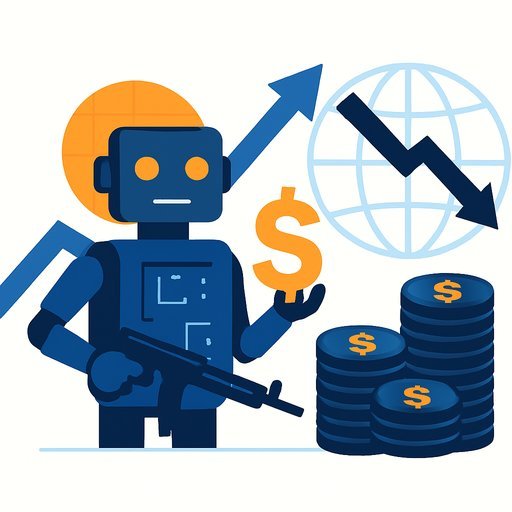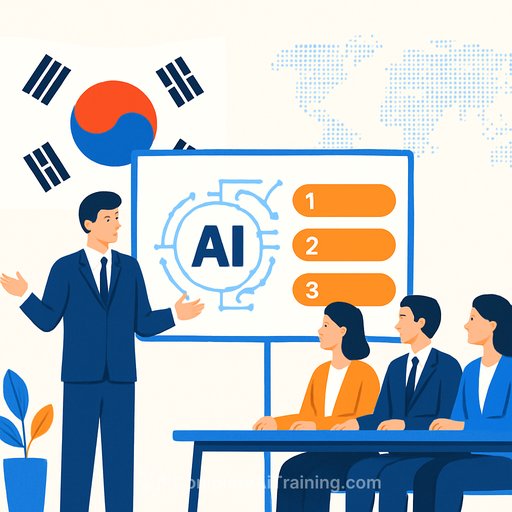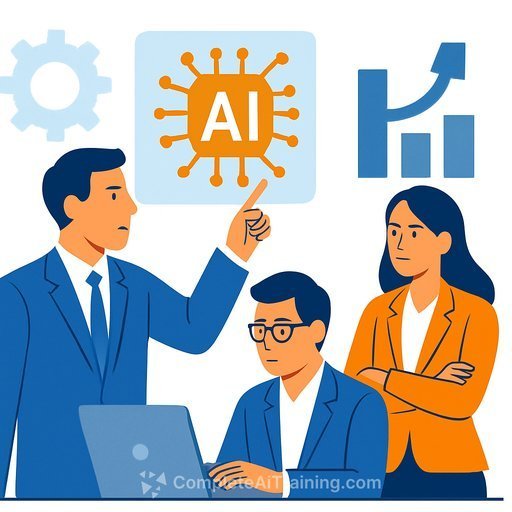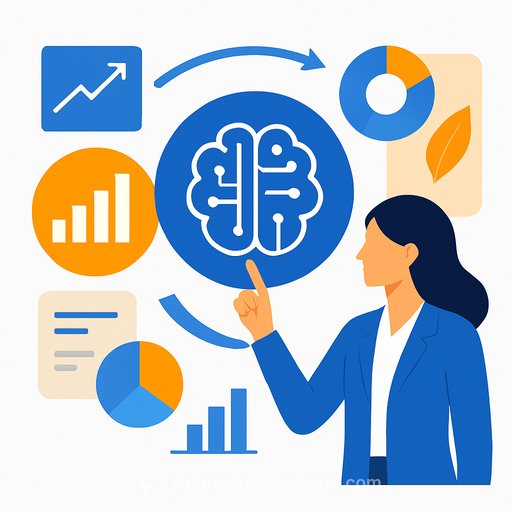AI Strategy - What SAP's Cloud and AI Growth Signal for the Enterprise Market
SAP's third-quarter results offer a clean read on where enterprise AI is actually creating traction: in embedded use cases tied to core systems, delivered through the cloud, and sold with clear compliance guarantees. The company's leaders sound confident - and the numbers back them up.
For executives planning 2025-2026, SAP's shift shows what buyers are willing to fund: integrated AI inside ERP workflows, data residency protections, and predictable subscription economics.
The signal in SAP's numbers
SAP reported a cloud backlog of €18.84bn (US$21.9bn), up 23% year over year. Cloud revenue reached €5.29bn (US$6.15bn), up 22%, with the Cloud ERP Suite at €4.59bn (US$5.33bn), up 26%.
Total revenue rose 7% to €9.08bn (US$10.55bn). Recurring revenue is now 87% of the total, speaking to contract quality and visibility. Operating profit climbed 12% to €2.49bn (US$2.89bn), even after roughly €0.2bn (US$0.23bn) related to tax disputes and workforce changes.
Christian Klein, CEO, put it bluntly: SAP is gaining share as customers adopt the full Business Suite, including Business Data Cloud and AI. That aligns with what boards want to see from AI budgets: measurable outcomes attached to systems that already run finance, supply chain, and HR.
Why this growth matters for AI buyers
- AI is sticking when it's native to ERP and analytics - not a side project.
- Vendors that own the data model and process layer convert AI interest into revenue faster.
- Predictable subscription mixes (near 90% recurring) signal lower risk for long-term AI bets.
Partnerships that remove adoption friction
OpenAI and SAP struck a deal to support Germany's public sector, pairing SAP's enterprise apps with large language models. The pitch is simple: use Gen AI without building or operating foundation models yourself.
SAP also partnered with AWS to run its Sovereign Cloud on AWS's European infrastructure, with Amazon planning a €7.8bn (US$9.1bn) investment. The focus is data residency - keeping sensitive data within borders to meet strict rules in public sector, finance, and healthcare. For context, see AWS's overview of the initiative here and the EU's data protection framework here.
Go-to-market momentum: RISE with SAP
Alphabet, ANA Holdings, Computacenter, and DXC Technology joined RISE with SAP. RISE packages the move to cloud ERP and sets a clear lane for AI extensions.
Strategically, it shortens sales cycles, standardizes migrations, and creates more touchpoints to attach AI services. That's the flywheel: platform first, AI modules second.
Capital allocation that supports the shift
SAP completed a €5bn (US$5.82bn) buyback in August, repurchasing just over 26 million shares at an average price of €188.24 (US$219.13). The move fits the 2020 commitment to pivot from perpetual licenses to subscriptions with steadier cash flow.
Dominik Asam, CFO, highlighted disciplined execution and focus on profitability and cash flow despite macro uncertainty. The company also launched an internal AI-focused transformation in January 2024 and is targeting €10bn (US$11.64bn) in non-IFRS operating profit and €8bn (US$9.31bn) in free cash flow for 2025. Klein says the Q4 pipeline supports the push toward faster total revenue growth in 2026.
What this means for your 2025-2026 AI plan
- Prioritize AI inside core workflows (order-to-cash, procure-to-pay, FP&A) where data quality and controls already exist.
- Make data residency a buying criterion. Verify sovereign options, operational controls, and auditing rights up front.
- Treat foundation models as a feature layer. Your leverage comes from process context, clean data, and security posture.
- Lock in subscription economics that scale with value: usage tiers, outcome clauses, and transparent model-inference pricing.
- Mandate integrated governance (access, lineage, retention) before pilots go live, especially for regulated units.
- Set line-of-business KPIs for AI (cycle time, forecast accuracy, DSO/DPO, write-offs) and review them monthly.
- Use packaged migration programs (e.g., RISE equivalents) to compress time-to-value and reduce integration debt.
- Pilot with two vendors where possible to keep optionality without fragmenting your data model.
Metrics to watch next quarter
- Cloud backlog growth versus conversion to revenue (sales quality and implementation speed).
- AI attach rates on ERP deals (proof that buyers pay for embedded AI, not just base cloud).
- Sovereign Cloud wins in public sector, finance, and healthcare (compliance as a sales accelerator).
- Gross margin trajectory on AI features (unit economics as adoption scales).
Bottom line
SAP's quarter shows where enterprise AI budgets are flowing: into platforms that already run critical processes, with AI stitched directly into the work. Compliance assurances and predictable subscription models are doing the heavy lifting on adoption.
If your AI roadmap is still tool-first, flip it. Start with the systems your CFO and COO already trust, then layer in AI where data and decisions meet.
If you're aligning leadership and teams on practical AI strategy, you can explore role-specific programs here: Complete AI Training - Courses by Job.
Your membership also unlocks:






